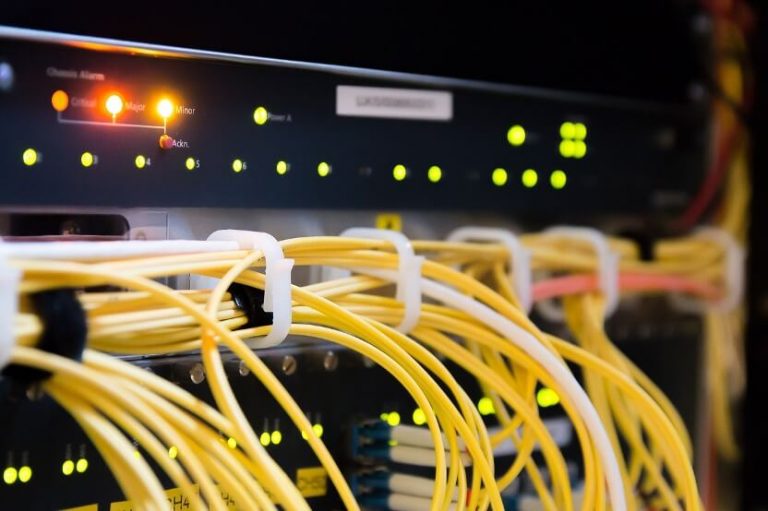Harnessing Control: A Comprehensive Guide on How to Use Your Router to Monitor Internet Activity

Introduction
In the age of digital connectivity, the internet plays a pivotal role in our lives, serving as a gateway to information, entertainment, and communication. With the increasing need for online security and the desire for effective parental controls, the ability to monitor internet activity has become a valuable feature. This comprehensive guide aims to empower users by unraveling the intricacies of using a router to monitor internet activity. From understanding the basics to implementing advanced features, we explore the tools and techniques that put you in control of your digital realm.
Understanding Router-based Internet Monitoring
Your router, often considered the heartbeat of your home network, serves as the central hub through which all internet traffic passes. Leveraging the capabilities of your router to monitor internet activity provides a holistic view of the devices connected to your network and the data they are accessing. Whether you’re a parent keeping an eye on your children’s online activities or an individual concerned about network security, router-based monitoring offers a powerful solution.
- Accessing Router Settings: Before delving into internet activity monitoring, it’s essential to access your router’s settings. Typically, you can do this by entering the router’s IP address into a web browser. Consult your router’s manual or check the manufacturer’s website for specific instructions.
- Enabling Basic Logging: Many routers come equipped with basic logging features that record the websites visited by devices on your network. Once in the router settings, navigate to the logging or monitoring section and enable the appropriate options. Keep in mind that the level of detail provided may vary among routers.
- MAC Address Filtering: Media Access Control (MAC) address filtering allows you to create a list of permitted or blocked devices based on their unique MAC addresses. This feature enables a more granular control over which devices can access the internet, offering an additional layer of security and monitoring.
- Quality of Service (QoS) Settings: QoS settings on routers allow you to prioritize certain types of internet traffic over others. While not a direct monitoring tool, QoS can indirectly impact internet activity by ensuring that critical applications (e.g., video calls) receive priority, optimizing overall network performance.
Advanced Monitoring Techniques
For users seeking more comprehensive insights into internet activity, advanced monitoring techniques can be employed:
- Packet Sniffing: Packet sniffing involves capturing and analyzing data packets as they traverse the network. While this method provides in-depth insights into internet activity, it requires specialized tools and a good understanding of networking protocols.
- Third-party Firmware: Some routers support third-party firmware like DD-WRT or OpenWRT, which often include enhanced monitoring features. Be cautious when considering firmware modifications, as they may void your router’s warranty and require technical expertise to implement.
- Parental Control Features: Many modern routers come equipped with built-in parental control features. These features allow you to set internet access schedules, block specific websites or categories, and receive activity reports for each connected device.
- DNS Filtering: Implementing Domain Name System (DNS) filtering involves configuring your router to use a specific DNS server that filters out unwanted content. This method allows you to block access to specific websites or types of content at the DNS level.
Best Practices for Internet Activity Monitoring
As you navigate the realm of router-based internet monitoring, consider these best practices to ensure a balanced and effective approach:
- Regularly Review Logs: Periodically check the router logs to stay informed about the internet activity on your network. This can help you identify any unusual or unauthorized access.
- Communicate with Users: If you are monitoring internet activity within a family or shared environment, open communication is key. Discuss the reasons for monitoring, establish expectations, and maintain transparency to build trust.
- Update Router Firmware: Keep your router’s firmware up to date to ensure that you have access to the latest security features and enhancements. Manufacturers regularly release updates to address vulnerabilities and improve overall performance.
- Balance Security and Privacy: While monitoring internet activity is crucial for security and safety, it’s essential to strike a balance between security measures and respecting individual privacy. Be mindful of the potential implications and legal considerations.
Conclusion
In the dynamic landscape of the digital age, harnessing control over internet activity has become a necessity for users seeking to ensure online security, enforce parental controls, or simply gain insights into network usage. By leveraging the capabilities of your router, you can implement a range of monitoring tools and techniques, from basic logging to advanced packet sniffing. As technology continues to evolve, staying informed about router-based internet monitoring empowers users to navigate the digital realm with confidence, ensuring a secure and controlled online environment.




